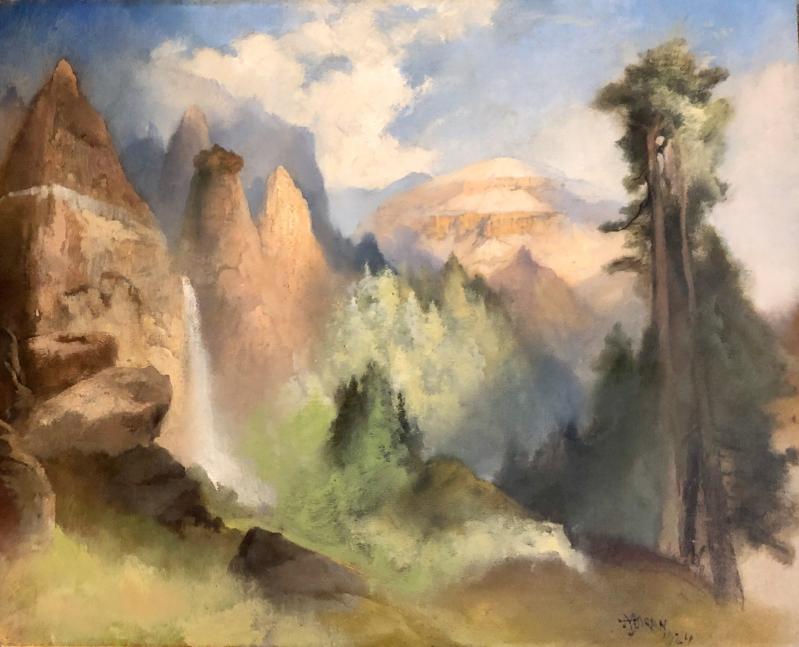Those who were enthusiastic about the possibilities inherent in the restoration of the Thomas and Mary Nimmo Moran Studio years ago will rejoice in the announcement of the exhibition “Thomas Moran Discovers the American West,” which will go on view there on Saturday, running through early November.
The show will include paintings, watercolors, sketchbooks, engravings, maps, and other souvenirs from Thomas Moran’s 1871 sojourn to Wyoming. The trip and its resulting paintings were pivotal in advancing his career both nationally and internationally and inspired the creation of the National Parks & Service.
Richard Barons, the East Hampton Historical Society’s chief curator, has organized the temporary exhibition, a large portion of which had its origins in Moran’s East Hampton studio before being donated to Yellowstone National Park in the 1940s. Proving Moran was no East Coast shrinking violet, the cache includes a pistol the artist used to kill a rattlesnake in true cowboy fashion.
Mr. Barons noted that Moran, who was a British immigrant, began his expedition only a few years after the Civil War and two years after three men died exploring the Grand Canyon. He credited Moran’s determination to his “intense love of the American landscape and the almost religious powers that these remarkable natural creations could inspire” and the fact that no one had yet painted “these otherworldly land formations.”

Moran became fascinated with the region after being hired to create ink drawings based on sketches made by two engineers on a trip to Yellowstone in 1870. The next year he set off by train and stagecoach to Montana to join the Hayden Expedition. It was the first of several trips the artist made to the West, Mexico, and abroad in the years following.
The Studio, which opened to the public last year and has National Historic Landmark status, was also recently added to the Historic Artists’ Homes and Studios Program of the National Trust for Historic Preservation. The property includes both the family living areas and the artist’s studio as well as outbuildings.
In addition to the exhibition, the site has educational programs planned for students and adults that address art, landscape, architecture, and local history, and connect the site to its role in the history of the nation and its art.

